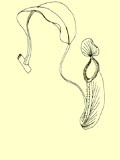

 |
DEB News
by David Dudgeon
We live in interesting times. The big news recently has been EPD’s rejection – on ecological grounds - of the EIA for the KCRC rail line through Long Valley. Predictably, KCRC have appealed. This one will certainly run and run. Almost as significant, EPD has also nixed the EIA for the north-south road crossing Lantau from Tai Ho to Mui Wo – again, on ecological grounds. This is significant, since it effectively pits one Government (EPD) against another (Highways Department) .The solution is obvious however: either abandon the link (a highly unlikely outcome) or build a tunnel.
The implications of the first case (EPD versus a big, bad developer – albeit one that has very close links to Government) should post a warning to private companies that EPD cannot be relied upon to be compliant supporters of the desecration of the Hong Kong countryside. A subsidiary point is that, in rejecting the EIA, EPD seemed unconvinced that impacts of railway construction would be contained within the footprint of the work site. This recognition is overdue, as anyone who has observed the collateral damage associated with civil engineering in the countryside will be able to confirm. Lisa Hopkinson (Green Lantau Association) recently emailed me about the consequences of construction of a road running from the end of Sham Wat Road across the stream to Sham Wat village on North Lantau. Contractors working for Highways Department (again!) have caused enormous damage to the foreshore, including dumping of construction waste on mangroves, diversion of the stream, and dumping of rocks and rubble on the beach (see p.16-17). In this case, the environmental effects are felt well beyond the site boundaries. Such damage is just the sort of thing that worried the Director of EPD during his deliberations over the KCRC rail line EIA. There were other issues too (the likely effectiveness of mitigation, the lack of due consideration being given to alternative routing of the rail line). Nevertheless, Green Groups (if not work-site supervisors) will welcome the attention given to what is actually happening on the ground during the construction phase.
What else is new? The release of the Biodiversity Survey results, much trumpeted in the previous issue of Porcupine!, has led to –– well, nothing much. After months of being hassled by AFCD to ‘get the results out’, the official response to our report has been muted. We are told that they have been visiting the sites recommended for protection and that they are reviewing conservation policy in Hong Kong. One intention of this is to address issues relating to the protection of ecologically important sites currently under private ownership. Consultation of relevant government departments will be needed, and public consultation is (according to C.C. Lay of AFCD) scheduled for the middle of next year. So we won’t be holding our breath. The delay gives rise to concern that many sites could be trashed in the interim – perhaps by a sudden resumption in interest in agriculture accompanied by tree-feeling, marsh draining and so on (the case of Sham Chung comes to mind) - let’s hope not.
P.2
|
Porcupine! |
 Copyright © 2000 |